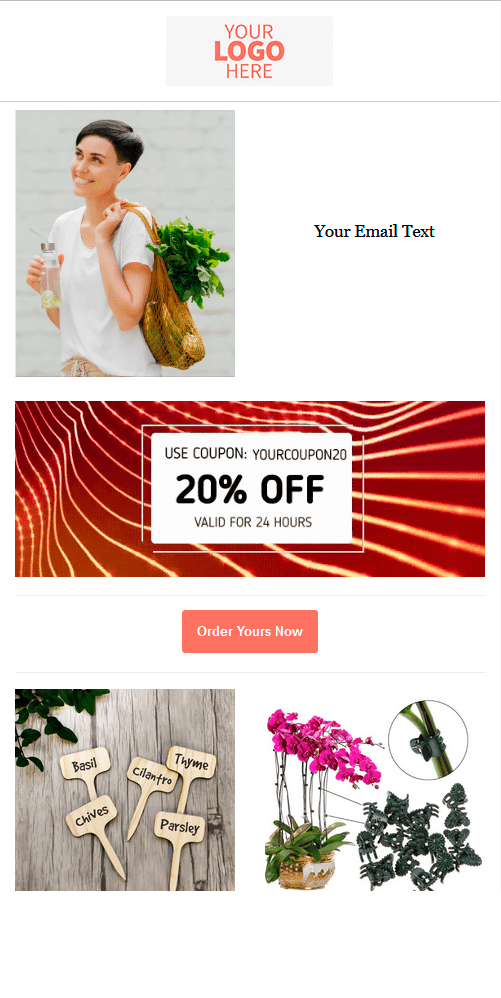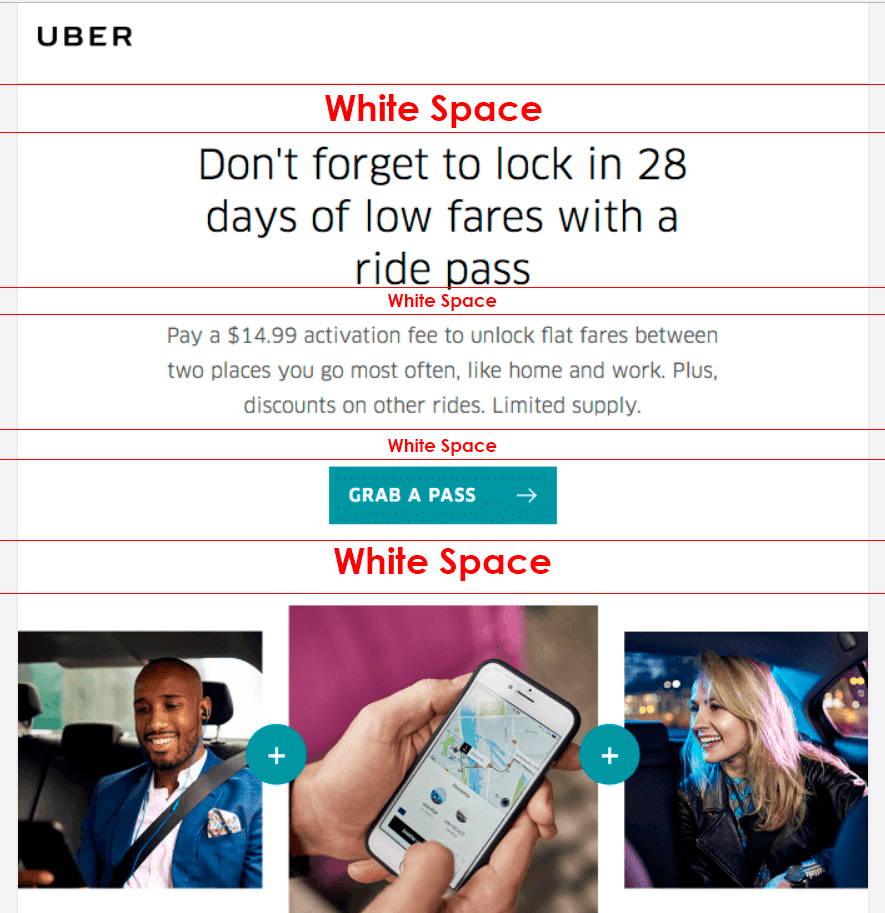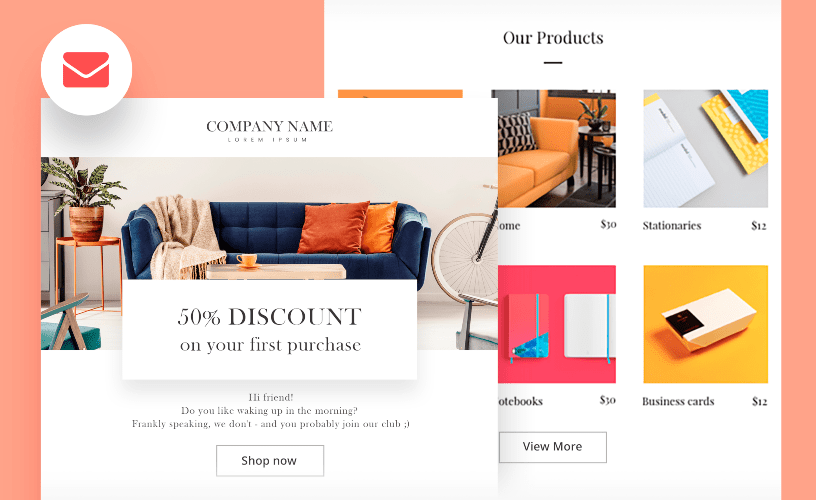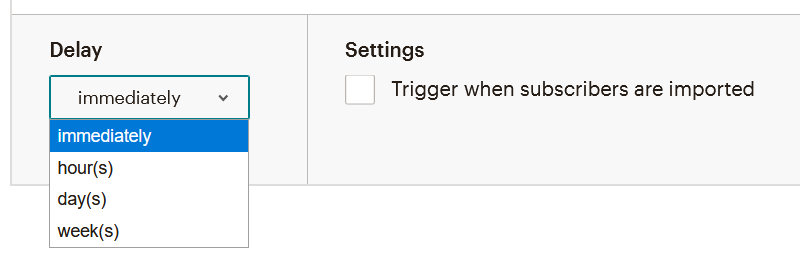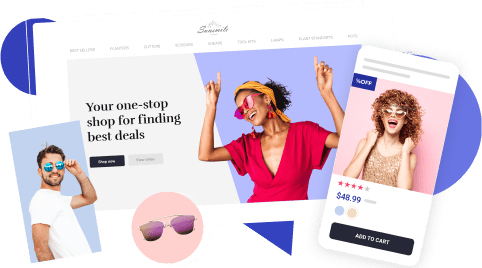Email Marketing Strategy For Your First Campaigns
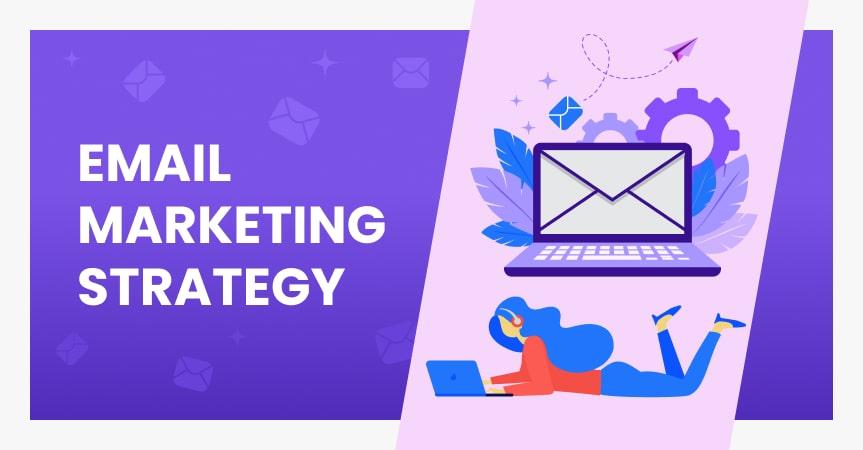
Have you never launched email marketing campaigns? Keep calm, my friend, as email marketing has a lot of cool benefits. When used correctly, it can boost your sales, attract new customers, and help to retain them. It’s also a great way to promote your brand. Our marketing team is here to help you create your own successful email marketing strategy!
What is email marketing?
Today, each of us receives a ton of different promo emails, but there is no denying the impact of well-made email marketing on brand promotion.
Email marketing helps you build good relationships with your potential customers. But you need to use this strategy wisely! With email marketing, you not only sell your products, but also share news and promotions, improve your cart abandonment rate, tell the brand’s story, and much more.
Does email marketing work?
In fact, a 2019 study by the DMA found that for every $1 spent, email marketing has an average $42 return on investment (ROI). When shoppers are ready to buy something, they often look for emails from their favorite stores.
Still, people receive more and more emails all the time, and it can be challenging to stand out in full inboxes. That’s why we decided to give you some email marketing strategy tips you need to shine.
How to craft your first email marketing strategy?
#1 Set up your goals
If you don’t set any email marketing goals or don’t track any metrics related to them, you won’t ever know which strategy works.
You always need to set goals so that you can track your promotional results.
When setting goals, stick to the S.M.A.R.T. technology:
S – Specific
Set as clear and specific goals as possible. The narrower your goal is, the better you’ll understand the steps that need to be taken to achieve it.
M – Measurable
Set goals that can be measured. For example, you want to increase the customer conversion rate by 10%. And for this goal, there are clear indicators that you will be able to track.
A – Achievable
Achievable goals will help you stay motivated and focused. And so you can easily track your result. If your goal is too ambitious, then divide it into preliminary steps and achieve everything gradually.
R – Relevant
When you set goals, consider whether or not they’re relevant. Each of your goals should align with your values & larger, long-term goals.
T – Time-based
Knowing the end-date will make it easier for you to achieve your goal, as you will be able to prioritize and build your way correctly.
For example, one of your goals is to create an e-marketing audience of two thousand people in a month, send them at least one promo email a week, include two discount coupons and an invitation to a closed sale.
With S.M.A.R.T goals, you’re more likely to achieve your goal efficiently & effectively.
#2 Create an email marketing plan
There are a few subtleties you’ll want to consider when creating a your email marketing strategy.
-
Signup sources
There are many tactics to attract subscribers. For example, you can use the form on the website, pop-up, landing page, lead ads on Facebook, and more. Choose your own and expand your email subscribers’ list. But keep in mind, you can always ask for professional help and get cool lead-generating services such as the Irresistible Lead Magnet and Lead Generation Pop-up Setup.
-
Define your audience
You should always clearly understand who your audience is. This insight will allow you to establish better contact with your customers and speak the “language‘ that would resonate with them. Try to segment users within your audience so that you can send them personalized emails. Thank the customers who made the purchase and give a coupon for an additional discount. To the customers who came thanks to the pop-up, you can provide the promised coupon and show the assortment of your store.
A study by Experian found that personalized emails deliver 6x higher transaction rates! It’s also a great way to stand out from the competition.
-
Decide what to write
Now that we know the audience, we need to decide what to write about. In fact, you can write about anything. Tell your customers about an upcoming promotion, send an invitation to a closed sale, or tell them the story of your brand. But you shouldn’t focus only on selling letters. Make your potential buyer feel like a friend of your brand. The better you set up an emotional connection, the better your sales will go.
-
Establish your sending frequency
Too frequent mailouts can lead to scaring off a potential client with such an intensity, and as a result, your emails won’t be opened. Worst of all, your clients might unsubscribe from your mailing list. Choose to send your email campaign at your own pace (e.g. immediately after subscribing – 1 day later – 3 days – 7 days – 12 days) , and check the unsubscribe rates and the click-through rates to find your best working strategy.
-
Choose a platform for email marketing
Choosing the right platform will help you solve lots of problems. Therefore, study this question attentively. There are different email marketing solutions, so consider their advantages and rates, and choose what suits you best. As for our marketing team, we work with MailChimp. This platform allows you to automate templates, customise emails, and add designs with ease. And you can also add pop-up for additional promotion and attract customers. If you want to join MailChimp, just click here.
-
Make a content plan
Creating a content plan is one of the main points of success in email marketing. It is important to remind the customer about your brand and please them with special offers.
#3 Create your email template
At this stage, you need to decide whether you will build each campaign from scratch or use ready-made email templates. Using ready-made templates will save your time, but creating your templates with a unique design yourself will add originality to your brand. That’s what you’ll need to decide for yourself!
Don’t forget that your letter structure doesn’t have to be complicated. Otherwise, you will confuse your customers. Pay special attention to the header, footer, and your use of white space throughout your email template. White space is the area you see between various elements in your email that’s left blank.
-
Email header and footer
The header and footer are places to show your brand. The header should include something as simple as your logo. And the footer should include the links to your social media, your unsubscribe link, as well as your physical company address. Thanks to these rules, your emails won’t go to the spam folder.
-
Whitespace
Don’t overload your email! Add only the most important details and items. And it’s better to have more whitespace in your email than not have it at all. The whitespace adds style to your message and makes the customer study the content of your promo emails.
#4 Use engaging images & visuals
In fact, studies have shown that people can recall as much as 65% of visual content up to three days later compared to just 10% of text-based content. Email marketing companies that use visual content have a 7x higher conversion rate. Inspiring, isn’t it?
Visual content is more effective, so it’s a great way to highlight the information you need for the promotion of your store.
#5 Automate your email campaigns
Most email marketing automation platforms have the option to set triggers for promotional emails. Thanks to triggers, your email marketing can be automated in accordance with customer’s actions. For example, after subscribing to your newsletter, a potential customer automatically receives a welcome email. It’s a great opportunity to save your precious time.
#6 Help conversions happen
Help your subscribers to click through from your email campaigns – make it as easy as possible for them.
According to our research, 41% of email opens are happening on mobile devices. Therefore, if your campaigns aren’t optimized across all devices, then you’re probably making it unnecessarily difficult for your subscribers to convert.
But don’t worry! In case you use a platform with a drag-and-drop editor (like MailChimp, for example) your emails will be optimized across all devices automatically.
#7 Make sure your email marketing campaigns are branded and trustworthy
It’s highly likely that your email campaigns aren’t the only interaction your subscribers are having with your online store. In fact, they visited your website or social media page to sign up for your email.
Because of this, it’s important that your email campaigns are aligned with the colors, fonts, and branding you use across all your other customer touchpoints so that your customers have a consistent experience with your brand.
#8 Follow email regulations to avoid going into a spam folder
Even though you’re creating beautiful and engaging email campaigns, some recipients may still want to unsubscribe. Although setting up an unsubscribe option might be considered a minor step, ignoring it can cause disastrous consequences for deliverability and your sender reputation.
You may want to buy or rent a ready mailing list, but that’s illegal and useless. Simply having a big email marketing list won’t guarantee your success, and if your list is full of unengaged recipients, it might be doing more harm than good!
Also, we highly recommend you read the rules of the email marketing platform that you use. All of them have their own acceptable use policies that you don’t want to violate. For example, MailChimp considers vitamins, supplements, adult items, and more as Content Subject to Additional Scrutiny. If you won’t be careful, your account can be suspended, throttled, or disabled. So please pay attention!
#9 Don’t send promotional content only
A few years ago, Marketingsherpa ran a study asking consumers “in which of the following ways, if any, would you prefer companies to communicate with you?” More than 70% of respondents chose email, dominating a list of other choices including SMS, social media, direct mail, and online/print ads. Not much has changed since then and customers still prefer email.
But it doesn’t mean they want every email to be blatant promotion. That’s a sure-fire way to get your list to hate your guts.
When plotting your email campaigns and choosing the content to include, in the ideal world, you should aim for an 80/20 mix using the Pareto Principle. Simply put: 80% of your content should be devoted to valuable and useful information, and 20% should be devoted to the promotions, sales, and products you’re selling.
#10 Review and test your email marketing campaign before sending
Compile and use a pre-send email checklist to minimize your chance of sending email campaigns with mistakes. Check for spelling, links, and browser variations before sending off an email marketing campaign.
Also, you can send a test email to at least one other person (or even yourself) so they could check links and review the overall formatting of your email marketing campaign.
#11 Analyze your results
Once your first email starts to get opened and clicked by your subscribers, you’ll be able to track the success of your campaign.
The reports section of your email marketing tool is the place to go to understand how people interacted with your email campaigns. Also, you can use your website analytics tool (such as Google Analytics, if you use UTM marks).
Email marketing campaigns produce lots of data that indicate the health of your email campaign. Some important metrics to note include:
- Unique opens
- Click-through rates
- Unsubscribe rates
- Spam complaints
You don’t have to measure every last metric available to you, but make sure you’re continuously monitoring the same 5 or 6 metrics for each campaign. This way, you can capture a complete picture of how your email marketing campaigns are performing.
If you see that some metrics are not good enough, it only means you have room for growth! Now you have data to study, which is great, as you can improve your future campaigns.
#12 Take care of your brand awareness
Once you’ve finished your campaign, build awareness for your brand across all available marketing channels. You can include more common methods, such as social media marketing, as well as more unusual, like giveaways and contests.
As you build brand awareness, you can earn more followers and subscribers. This will be useful for your upcoming email marketing campaigns by giving you a wider and more engaged audience.
By having a wider and more diverse group of subscribers, you are more likely to attract more leads and gain more conversions. Ultimately, this means more interest and revenue for your dropshipping business.
Summing up
Email marketing can be a powerful driver of sales & revenue for your dropshipping business, and has a greater reach and return on investment than any other channel available to marketers today.
Although it might feel overwhelming at first, just follow the steps outlined in this guide to quickly and get started with your email marketing strategy & optimization easily. The more experience you gain building email marketing campaigns, the more efficient you’ll become and the more insight you’ll gain into what works best for your online store.
If you need expert assistance with your email marketing strategy, you can order a ready chain of follow-up emails from our team. And if you’re already using email marketing to promote your store, you are welcome to share your experience with us!
